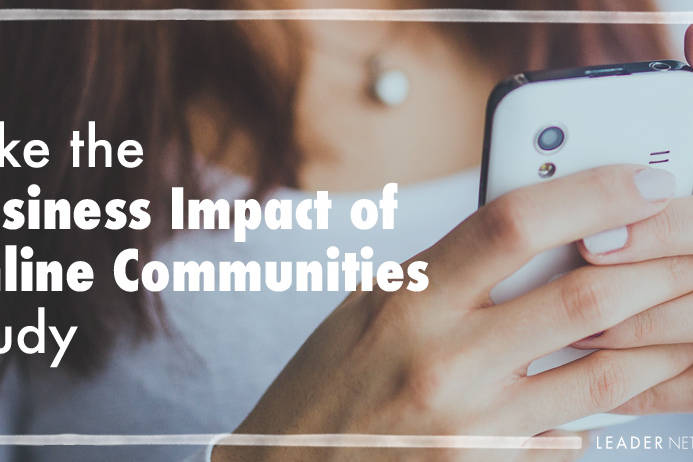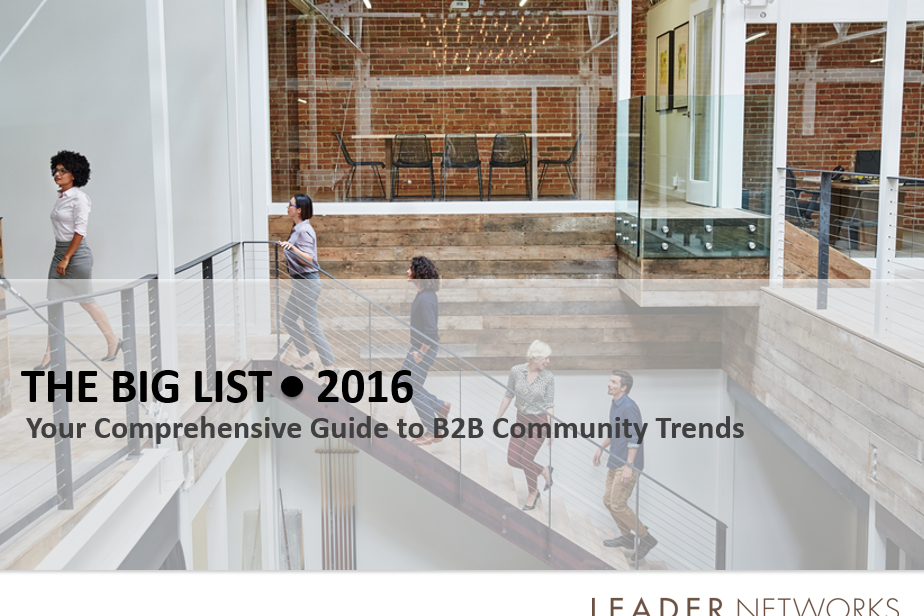Online community is like world peace – everyone thinks it is a good idea but it means something different to each person. Companies frequently encounter a core problem when planning an online community; the key stakeholders each hold different views of what the community will be like and what it will accomplish once it is launched.
Because online community and social media is fairly new to business, we are still in the process of creating a language to communicate.Inherently, in the absence of well formulated definitions and shared experiences, people often draw from their personal experiences to fill in the blanks. So, when business sits around the table to talk about an online community for their company, product or service line, each person hold a different model; that is largely shaped by their relationship with one. A golf expert could evoke a community where many people share information and experiences, facts and figures about their sport. Another stakeholder who may have a medical issue and uses online channels to keep informed may think about a deeply personal exchange of information, and someone else may recall the technical help forum they recently relied upon to solve a networking problem quickly. All of these kinds of experiences are valid and valuable, but they each represent a different model for the online community.
When planning an online community it is so important that all the stakeholders are able to clearly articulate the business goals that the community will serve and understand how the members will be able to benefit from it. When stakeholder expectations are varied, it is likely (regardless of whether the community succeeds or not) that a certain percentage of stakeholders will not be pleased. Mismanaged business expectations gets in the way of community growth and development and can cause a fair degree of confusion at a critical time-period for the online community.
In order to help normalize expectations during the business justification point in an online community strategy, I find it helpful to work through the various forms of b2b communities to help wrap greater clarity around the vision. It is important to focus on the goals of the community in order to identify which model is the best fit for the business. Examples are often helpful along with a framework for thinking about the three different types of online community the company has to choose from: Information Dissemination, Shop-Talk and Professional Collaboration.
Information Dissemination Communities
The first type of online community, Information Dissemination, is where the organizing body creates content, messages, and really shapes the outcome. They’re really controlled or paternalistic environments. One great example that comes to mind is WhiteHouse.gov which offers the public an interactive space: there are feedback forms, polls, videos, and a followship of Twitter, LinkedIn and a number other social tools in order to encourage participation. I think I even saw a blog on there a couple of weeks ago. But they don’t really care what I think in that deep customer care sort of way. The site has some collaborative experience built in, but really the goal and mission is to share and disseminate information outwardly.
Another example is Method Cleaner’s community. OK, I admit I am a very clean person and have joined this community as I love to learn more about effective cleaning with environmentally sound products. This site gives me a channel for my cleaning love and serves to educate and inform me. I occasionally get to vote on a product but I am not connecting with the other members in a meaningful way – not do I want to. The community serves it purpose but there is no driving engagement among the participants. However, the information channel is strong and useful.
Shop Talk Communities
The second type of community is Shop Talk, where discussion groups focus on accomplishing a task, or exchanging transactional information, or getting help, like “How can I do this?” or “Where can I find that?” (Customer support communities would fall into this category.) Technical communities, or even WebMD or Dell, are great examples where a deep community of practice isn’t necessarily being formed. People come on a need basis, and, while they may have an ongoing relationship with these communities, it’s not in a deep, professional, and longstanding way among the majority of participants and members- although there are regular participants. They’re not really trying to deepen their practice, they’re trying to solve a burning problem or issue in the moment and only a small percentage of the visitors or the constituencies actually create a true network or community.
These Shop Talk communities are great for a business to learn about important trends and issues with their product base, gain ideas around future innovations and fixes for prevailing problems and also serve to drastically lower their customer support costs and users tend to do a pretty darn good job of helping each other- thus reducing call center burdens. (For those interested in this topic here is a great article about how to calculate and manage call center costs.)
Professional Collaboration Communities
And, the third type of community is Professional Collaboration. Those are often found in communities of business professionals. A lot of these communities are smaller by nature. They are safe and somewhat private online spaces designed to foster conversation. They tend to be more membership driven or subscription based; they tend to cost money or have sponsors; and they consist of people who meet on a longstanding basis in order to learn about and engage in a certain practice.
An example is Palladium Group’s Execution Premium Community- XPC. Here is a community of strategy professionals who are sharing information and best practice about the art and science of leading strategy. The goal of this community is to facilitate discussions and offer resources to the profession. I have covered this client’s case study in an earlier blog post. Client retention, brand management, thought leadership and deeper awareness of products and services are at the root of this community.
Another example of a professional community is Martindale-Hubbell Connected.This community of 30K+ legal professionals focuses on connecting people with each other and the LexisNexis products that serve the industry. Professional collaboration communities come in all shapes and sizes, from professional peer groups, to client communities, to those driven by news or information. But they all have a shared vision – to connect people over time to share ideas and experiences.
All three of these types of communities are very important; they all serve important roles. When people talk about online communities, they tend to think of them all rolled up into one single model driven by their personal expectations. But really there are three different types, and they serve three different purposes. And they have three different sets of metrics, goals, outcomes, and revenue models as well. So while that business community idea is still hot on the executive agenda, it is a good time to examine and refine what you really mean by online community so that your outcomes can match the goals – which is the very definition of success.
Warning: Attempt to read property "base" on array in /home3/trusten9/public_html/leadernetworks/wp-content/plugins/wp-user-profile-avatar/shortcodes/wp-user-profile-avatar-shortcodes.php on line 665
Warning: Attempt to read property "base" on array in /home3/trusten9/public_html/leadernetworks/wp-content/plugins/wp-user-profile-avatar/shortcodes/wp-user-profile-avatar-shortcodes.php on line 665
Warning: Attempt to read property "base" on array in /home3/trusten9/public_html/leadernetworks/wp-content/plugins/wp-user-profile-avatar/shortcodes/wp-user-profile-avatar-shortcodes.php on line 665
Warning: Attempt to read property "base" on array in /home3/trusten9/public_html/leadernetworks/wp-content/plugins/wp-user-profile-avatar/shortcodes/wp-user-profile-avatar-shortcodes.php on line 665
Related Posts
November 7, 2016
Survey: Can you show the business impact of your online community?
“The Business Impact of Online Communities” study
October 11, 2016
7 Key Trends in Online B2B Customer Communities
The Big List of B2B Online Customer Communities is the most comprehensive list…
September 8, 2014
Big List 2.0: The Top B2B Online Customer Communities 2014
I am thrilled to share the most comprehensive directory of B2B online customer…
9 Comments
Add comment Cancel reply
This site uses Akismet to reduce spam. Learn how your comment data is processed.



Very informative and helpful post Vanessa.
Great article. Any advice on how to get a professional collaboration community going? I manage a community for a group of professionals in a particular industry, but it only seems to be used for “shop talk”. How do I move at least some of the people – or get new people to participate – in the “professional collaboration” realm?
Hi Jaya and Susan,
Thanks for taking the time to leave a comment!
Susan, there are a variety of ways to move a group towards a professional collaboration community and the fact that it is within a particular industry suggests that there is likely to be “thought questions” and key issues that would resonate with the group. Without knowing anything about your group size, purpose or composition, it is hard to offer specific advice, but you may want to consider focusing the discussions more on longstanding concepts in addition to the shop talk exchanges. Feel free to give a call if you would like to talk about it further -perhaps I could be of assistance. 617-484-0778
Great piece — definitely something the stakeholders are struggling with at my current client. I look forward to using your breakdown to address our issues. One huge challenge is the platform. Any recommendations tools to that support and maximize these communities?
Hi Elaine,
The vendor choices are both limitless and limiting based on the user requirements, business goals and essentially what you need the software to do in support of the goals. is it a b2c – marketing community, a customer care effort? Will it need to bring in institutional content enmass or rely mainly on user generated content (UGC)?
Also, while software solutions for community often serve as stand-alone implementations, it is much better for the sponsoring company if the community platform interfaces with existing (legacy) systems so consider doing due diligence regarding the CRM systems to figure out what data needs to be either pushed into the community (membership directory) or pulled out of the community into the CRM system to ensure the community is useful across the board.
Another key issue is what kind of IT shop they run – are they .net or java based for example. that will impact the kinds of platforms that IT can support and help narrow the short list of software providers accordingly.
Many of our clients have found Telligent, Awareness Networks, Jive, and ning (as examples) to be worth exploring as enterprise ready platforms and there are many more out there.
Hope that helps!
best
Vanessa
Is there any reason that a community couldn’t have some components of each of these 3 models?
absolutely! great question – many online communities when they reach a certain stage of maturity do have components of each of these three models. In fact, it is important that they do – however, when first envisioning an online community an organization is well served to determine what their *primary* goal for the community is for the sake of both the members and the business or organization. This act of determining the appropriate community model helps the community planning efforts focus on the core objective with a greater degree of emphasis.And, helps to eliminate the too common problem of a community endeavoring to be all things to all people (and winding up nothing to noone as the saying goes.)
I hope this helps to answer your excellent question. Thanks for raising it!
best
Vanessa
Yes, I think it does. I am trying to build a community with elements of each of these models, and I guess its a fine balance between bringing everyone together and bringing too much together. Thanks.
[…] In this post about online communities, Vanessa discusses about the three different types of online communities that consist on the internet and what the differences are. The three are: Information Dissemination Communities, Shop Talk Communities and Professional Collaboration Communities. […]